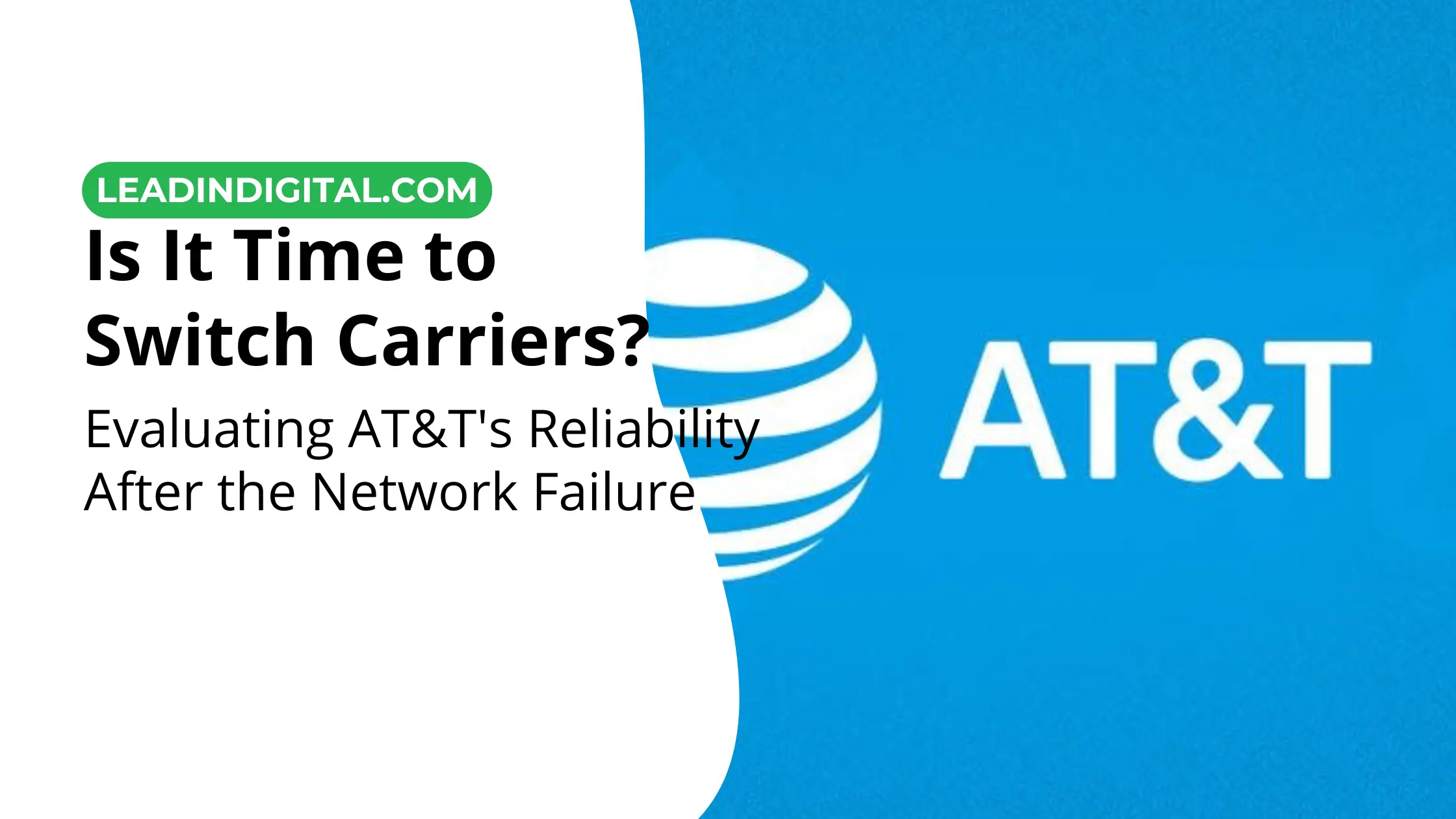
In todays world, keeping your phone and life connected is more important than ever. When a major carrier like AT&T goes down, it’s more than just an inconvenience, it forces millions to ask, “Am I holding the right hands or should I look for a change?” This post examines AT&T’s reliability, explores practical alternatives, and lays out how consumers can take back control in an era of network uncertainty.
Recap: AT&T’s October 2025 Outage & Track Record
A Quick Look at AT&T’s Outage Timeline:
| Date | Duration | Scope/Impact | Major Causes |
|---|---|---|---|
| Oct 2025 | Hours | National, DNS failure | Infrastructure-level DNS issues |
| Feb 2024 | 12 hours | National, all users | Network change/config error |
| June 2024 | Several hours | Regional | Carrier interoperability |
Reliability Score: How AT&T Compares in 2025
| Carrier | 4G Coverage % | 5G Coverage % | RootMetrics Reliability Awards | Unique Strengths |
|---|---|---|---|---|
| AT&T | 58 | 29 | 34 (states) | Widest land coverage, fastest text and speed in many states |
| Verizon | 56 | 9 | 31 (states) | Strong rural, urban coverage, video performance, responsiveness |
| T-Mobile | 43 | 36 | 1 (state) | Fastest 5G, affordable plans, rapid metro network expansion |
Backup Plans: Smart Alternatives for Staying Connected
No network is truly immune to outages. Here’s how you can secure your future connectivity:
1. Dual SIM/eSIM Backups
Modern smartphones let you add a prepaid eSIM or second SIM card from another carrier (such as T-Mobile or Verizon). If one network fails, you can instantly switch to the backup for calls, texts, or data.
| Provider | Networks Used | Plan Highlights | Starting Price |
|---|---|---|---|
| Airalo | AT&T, T-Mobile | All-50-states coverage | $4–$28 per period |
| Holafly | Multiple | Unlimited data | $3.90+ |
| Yesim | Verizon, AT&T, T-Mobile | No ID needed, instant activation | $17.60/30 days |
| Keepgo | AT&T, T-Mobile | 365-day validity | $8+ (varies) |
Setting up an eSIM takes minutes, and coverage is often excellent even for short trips or as backup.
2. Home Internet Backup/Failover
If your home id dependent on one ISP, consider:
Mobile Hotspot: Use a low-cost data SIM or eSIM from a different carrier as wireless internet backup.
5G/LTE Home Internet: Many carriers (incl. Verizon, T-Mobile) now offer affordable 5G/LTE home internet service, which can act as a dedicated backup line.
DSL/Cable/Base Wired Line: Old-school, but sometimes it’s the only thing that stays up in local or weather-related cell/data outages.
3. Satellite/Emergency Devices
If you’re in a remote area, travel often, or can’t afford downtime:
Starlink Emergency Kit: Offers portable, satellite based high speed internet with global coverage. Kits are compact, power efficient, and ideal for disaster or off-grid situations.
Personal Satellite Communicators: Devices like Garmin InReach or Motorola Defy let you send texts or SOS messages anywhere, independent of carriers.
Communication Workarounds for Outages
When cellular networks are down, there are still ways to stay connected and productive:
Internet Messaging: Use apps like WhatsApp, Signal, Telegram, or Messenger over any available Wi-Fi (even a public or neighbor’s signal).
Wi-Fi Calling: Many smartphones allow calls/texts via Wi-Fi just enable this in settings and connect to any Wi-Fi available.
Offline Productivity Prep: Download offline maps, email, key docs, music, and reference material before outages hit. Apps like Google Docs/Drive allow for offline work.
The Power of the Informed Consumer
Outages expose more than technical holes they reveal what matters most to customers: clear communication, transparency, and accountability. As a consumer, demand the following from your carrier:
Up-to-date Coverage Maps: Carriers should provide real, zip-code level coverage and reliability ratings, not just marketing claims.
Proactive Outage Updates: Expect clear, frequent alerts during disruptions, including estimated restoration times and honest explanations.
Better SLAs: Hold carriers accountable with detailed Service Level Agreements, especially for business or remote work needs.
Compensation Policies: Request customer credits or compensation after extended disruptions, as is standard in other utility sectors.
Should You Switch? What to Ask Before Making the Jump
Before moving on from AT&T (or any carrier), evaluate honestly:
How often does service fail for me at home, work, and on the road?
Does another carrier have probably better coverage and reliability in my area?
Am I set up for backup via dual SIM/eSIM, Wi-Fi, or satellite?
Have I checked real-time reviews (sites like Downdetector, RootMetrics) for complaints and speed/reliability trends?
What will switching cost in terms of contracts, family plans, and device compatibility?
Action Steps:
| Step | What to Do | Tools/Links |
|---|---|---|
| Review Outage History | Check Downdetector, FCC reports, Google news | downdetector.com, fcc.gov |
| Compare Coverage & Plans | Visit all carriers coverage maps, user reviews | carrier sites, RootMetrics |
| Set Up a Backup eSIM/SIM | Choose Airalo, Holafly, Keepgo, etc. | eSIM provider sites |
| Prepare for Emergencies | Consider Starlink, satellite communicators | starlink.com, Garmin/SPOT |
| Backup with Wi-Fi/Ethernet | Choose a wired ISP or mesh Wi-Fi system | Local ISPs |
Conclusion: Stay Proactive, Not Powerless
Carrier outages are here to stay, and no network no matter the commercials offers 100% uptime. Still, you have the tools and knowledge to protect your connectivity. With backup options, better information, and a little prep, you can move from being at the mercy of outages to being in control.
Whether you remain with AT&T or switch, prioritize reliability, flexibility, and transparency because being prepared isn’t just smart, it’s essential in 2025.




